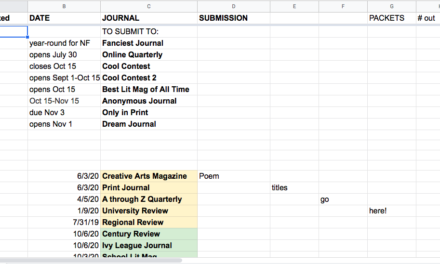 Assistant Editor Molly Reid: As a lover of flash fiction, I was elated to start my first year with the Cincinnati Review just as it was rolling out miCRo, the magazine’s online short-form feature. In six months, we’ve published 18 stellar pieces of fiction, poetry, nonfiction, and hybrid work. Our guidelines are fairly open: “For fiction, nonfiction, and hybrid works, each piece should be 500 words maximum. For poetry, submit poems 32 lines or less.”
Assistant Editor Molly Reid: As a lover of flash fiction, I was elated to start my first year with the Cincinnati Review just as it was rolling out miCRo, the magazine’s online short-form feature. In six months, we’ve published 18 stellar pieces of fiction, poetry, nonfiction, and hybrid work. Our guidelines are fairly open: “For fiction, nonfiction, and hybrid works, each piece should be 500 words maximum. For poetry, submit poems 32 lines or less.”
But what makes a 500-word story pop? What makes miCRo poems able to stand alone?
Each piece has been unique, has dazzled us in its own particular way, which makes it difficult to generalize about the reasons why we pick what we do. For stories, there are some things we can all agree on: It should catch the reader’s attention right away; it should not waste time or words getting to the point; it should be memorable. But the elements we traditionally look for when reading for the magazine—a well-crafted plot, complex characterization, evocative setting—are often not deal-breakers when it comes to flash prose.
In his essay “That ‘V’ Word” in The Rose Metal Press Field Guide to Writing Flash Fiction, Nathan Leslie writes, “Life is ambiguity, not serendipitous plotting. In this way, flash fiction is actually truer to life than other literary forms.” He goes on to use Joyce Carol Oates’ comparison of flash to Robert Frost’s description of a poem: “a structure of words that consumes itself as it unfolds, like ice melting on a stove.”
 While this is not particularly helpful as writing advice (write a story that is like ice melting on a stove?), it rings true. If it could be said there was an element that all our miCRo prose pieces share, it’s that they each feel like a completely new experience, a pop-up planet, the infrastructure inscribed in tiny print on every leaf and blade of grass.
While this is not particularly helpful as writing advice (write a story that is like ice melting on a stove?), it rings true. If it could be said there was an element that all our miCRo prose pieces share, it’s that they each feel like a completely new experience, a pop-up planet, the infrastructure inscribed in tiny print on every leaf and blade of grass.
This is done with surprising language, vivid images, and a blunt refusal to avert the narrative gaze. Many of the pieces we’ve featured for miCRo are timely, political, and emotional—they don’t shy away from big ideas or sentiment. Mahreen Sohail’s “Iddat” is a lyric meditation about the Islamic widow’s prescribed mourning practice to avoid men. In Michael Alessi’s “A Small, Silent Assurance,” an ex-husband’s wayward hands grope starfish on the couple’s first date at the aquarium. Laura Maylene Walter’s narrator gives birth to the universe in a public bathroom. In Kristine Ong Muslim’s “Holocene: Microfilm Reel 82,” she collapses time and blurs the line between reality and speculative news, gathering together Darwin’s barnacles, a SpongeBob theme park, drugged tigers, and a superbug that wipes out all humans.
Here’s what my fellow student editors had to say about what they look for in a miCRo piece:
Associate Editor James Ellenberger: “The short-shorts I like the most find ways to build emotional momentum without resorting to melodrama. An interesting structure, such as allowing the piece to exist as a single sentence, can often do the work of raising the stakes for me as a reader without sacrificing cadence. I love playfulness in form and content, too, and see short pieces as great opportunities to let our freak flags fly.”
Assistant Editor Caitlin Doyle: “The poems that grab our attention for the miCRo series tend to be pieces that combine accessibility and complexity, lucidity and mystery. They often invite us into a world we recognize and then surprise us as they swerve in unexpected directions. We sit up straighter when we encounter miCRo poetry submissions that combine sophistication of craft with intensity of feeling. Since miCRo is an online feature, competing with an endless stream of internet content every week, memorability is high on our list as well. If we sense that a poem’s sounds, images, ideas, and emotional nuances will linger in readers’ minds for a long time, we’re eager to share it through the miCRo series.”
All of this is to say: Send us your best short-form pieces! Though our regular submission period will be closing in a couple weeks, we’ve decided to keep submissions open for miCRo—and we want to read your melting ice cubes.










